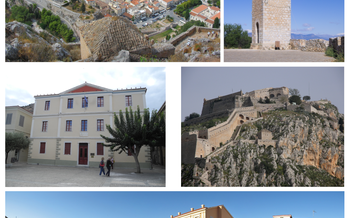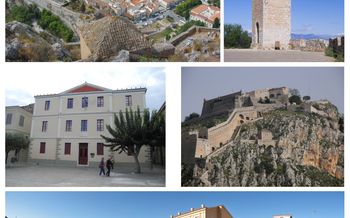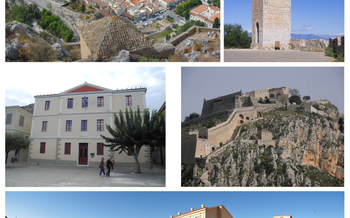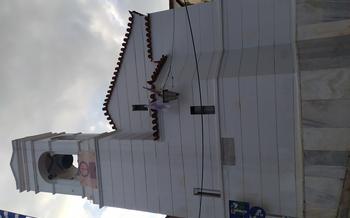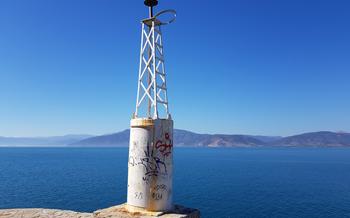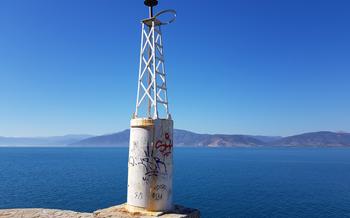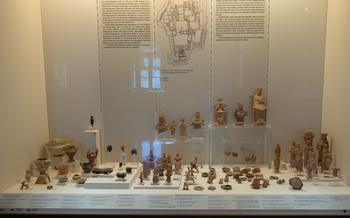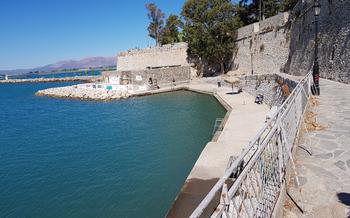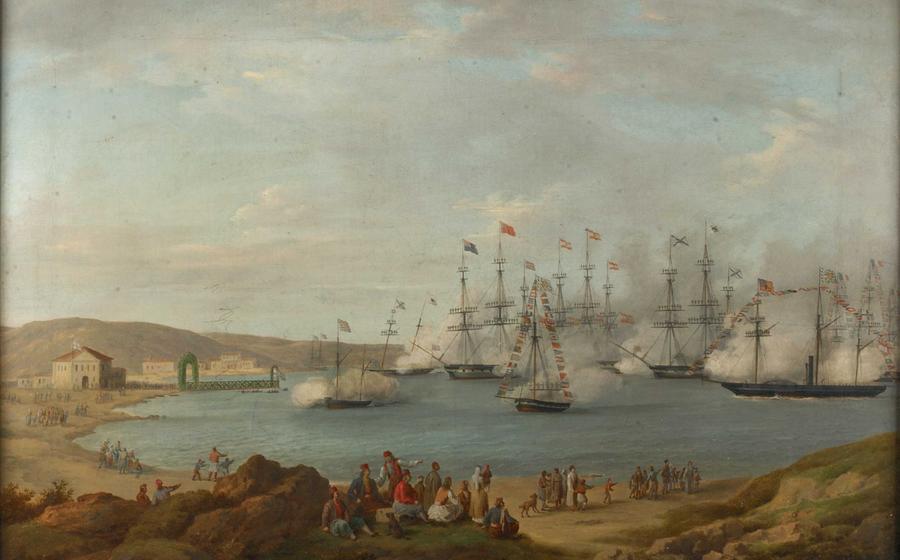
Nafplio Maritime Museum
- The Nafplio Maritime Museum: A Journey Through Greek Seafaring History
- Unveiling the Treasures of the Museum
- A Glimpse into the Lives of Greek Seafarers
- Exploring the Museum's Collections
- Interactive Exhibits for a Hands-On Experience
- Research and Conservation Efforts at the Museum
- Temporary Exhibitions and Special Events
- Educational Programs for All Ages
- Accessibility and Visitor Services
- The Museum's Contribution to the Local Community
- Unforgettable Experiences at the Nafplio Maritime Museum
- Tips for Planning Your Visit
- Photography and Social Media
The Nafplio Maritime Museum: A Journey Through Greek Seafaring History
The Nafplio Maritime Museum is a captivating journey into the rich seafaring legacy of Greece. Established in 1949, this museum has become a treasure trove of maritime artifacts, documents, and stories that narrate the country's deep connection to the sea. Located on the picturesque waterfront of Nafplio, this architectural gem stands as a testament to the city's maritime heritage. Its strategic position on the Peloponnese peninsula has made Nafplio a bustling port city throughout history, attracting sailors, merchants, and naval fleets from across the Mediterranean. The museum's collection reflects this diverse maritime heritage, inviting visitors to delve into the tales of exploration, trade, and naval battles that have shaped Greece's relationship with the sea.
Unveiling the Treasures of the Museum
The Nafplio Maritime Museum boasts an impressive collection of permanent and temporary exhibits that narrate the rich history of Greek seafaring. Permanent exhibits showcase model ships, navigational instruments, maps, and personal belongings of sailors, providing visitors with an intimate glimpse into the lives of those who braved the seas. Among the highlights are the intricately detailed models of ancient Greek and Byzantine ships, as well as a replica of the "Hellas," the first Greek steamship.
Temporary exhibits delve into specific aspects of maritime history, showcasing artifacts and stories that shed light on lesser-known chapters of Greece's seafaring past. These exhibits often feature collaborations with other institutions, researchers, and artists, bringing fresh perspectives and insights to the museum's narrative. Interactive displays and educational programs further enhance the visitor experience, making the museum a vibrant and engaging learning environment.
A Glimpse into the Lives of Greek Seafarers
The Nafplio Maritime Museum provides an immersive glimpse into the lives of Greek seafarers, showcasing their expertise and ingenuity. Traditional shipbuilding techniques are presented, highlighting the intricate craftsmanship involved in constructing wooden vessels. Navigation instruments and maps illustrate the methods used by sailors to chart their courses across vast bodies of water. Personal belongings and stories offer a poignant insight into the daily lives and experiences of these intrepid voyagers.
The role of seafaring in Greek culture is explored through exhibits that showcase the importance of maritime trade, fishing, and exploration. Visitors can learn about the contributions of Greek sailors to the development of maritime technology, naval warfare, and global exploration. The museum also presents the challenges and hardships faced by seafarers, including the dangers of storms, pirates, and shipwrecks.
Exploring the Museum's Collections
The Nafplio Maritime Museum proudly showcases an extensive collection of artifacts that provide a comprehensive insight into Greek seafaring history. Among the highlights are intricate model ships, meticulously crafted to replicate historical vessels. These models offer visitors a glimpse into the evolution of shipbuilding techniques, from ancient galleys to modern steamships. Maritime equipment, including compasses, sextants, and lanterns, further illustrate the technological advancements that enabled Greek sailors to navigate the vast seas.
The museum's collection also includes a remarkable array of paintings and sculptures that capture the essence of naval scenes. These artworks depict battles, shipwrecks, and everyday life at sea, offering visitors a visual representation of the challenges and triumphs faced by Greek seafarers. Historical documents and manuscripts provide written accounts of maritime expeditions, trade routes, and naval battles, shedding light on the rich history of Greek seafaring.
Personal items and uniforms of Greek sailors add a personal touch to the museum's collection. These objects, such as clothing, journals, and photographs, offer a glimpse into the lives of the men and women who dedicated their lives to the sea. Through these personal belongings, visitors can connect with the human stories behind the grand narratives of Greek maritime history.
Interactive Exhibits for a Hands-On Experience
The Nafplio Maritime Museum offers a range of interactive exhibits that allow visitors to engage with the museum's collections in a hands-on way. These exhibits are designed to enhance the visitor experience, making it more immersive and memorable.
One of the highlights of the interactive exhibits is the ship simulators. These simulators provide visitors with the opportunity to experience what it is like to sail a ship, navigate through challenging waters, and face various maritime scenarios. The simulators are equipped with realistic controls and visual displays, creating an authentic and engaging experience.
Another popular interactive exhibit is the virtual reality experience. Visitors can immerse themselves in the world of Greek seafaring by exploring virtual environments that recreate historical naval battles, shipwrecks, and other maritime events. The virtual reality experience offers a unique and immersive way to learn about Greek maritime history and culture.
In addition to these high-tech exhibits, the museum also features a variety of touchscreens with interactive maps and timelines. These touchscreens allow visitors to explore the museum's collections in greater depth, providing additional information and context.
The museum also offers hands-on activities for children and families, making it a great place for visitors of all ages. These activities include model ship building, knot tying, and treasure hunts. The museum also hosts workshops and educational programs for students, providing them with a unique opportunity to learn about Greek maritime history and culture.
Research and Conservation Efforts at the Museum
The Nafplio Maritime Museum is not merely a repository of artifacts but also an active center for preserving and researching Greece's maritime heritage. The museum collaborates with other institutions, universities, and organizations to conduct ongoing research projects on various aspects of Greek seafaring history. These projects encompass the study of ancient shipbuilding techniques, the analysis of historical documents, and the exploration of underwater archaeological sites.
The museum's conservation facilities are equipped with state-of-the-art technology to ensure the preservation of its precious artifacts. Conservators employ specialized techniques to restore and maintain the integrity of model ships, paintings, and other delicate items. Their meticulous work ensures that these artifacts can be enjoyed and studied by future generations.
Through its research and conservation efforts, the Nafplio Maritime Museum plays a crucial role in safeguarding Greece's rich maritime heritage. The museum's contributions to the field of maritime history are invaluable, ensuring that the stories and traditions of Greek seafarers are preserved and disseminated for years to come.
Temporary Exhibitions and Special Events
The Nafplio Maritime Museum is not just about its permanent collection; it also hosts a variety of temporary exhibitions and special events throughout the year. These exhibitions often focus on specific maritime-related topics, such as the history of shipbuilding in Greece or the role of women in seafaring. The museum also collaborates with artists, historians, and researchers to present innovative and thought-provoking exhibitions that explore the diverse aspects of maritime culture.
In addition to exhibitions, the museum organizes cultural events, lectures, and workshops that delve deeper into maritime history and traditions. These events provide an opportunity for visitors to engage with experts, learn about the latest research, and participate in hands-on activities. The museum also hosts seasonal programs and activities, such as summer camps and educational initiatives, designed to engage visitors of all ages.
Educational Programs for All Ages
The Nafplio Maritime Museum is committed to providing educational opportunities for visitors of all ages. School groups can book guided tours and workshops that align with their curriculum, allowing students to delve deeper into maritime history and culture. Families can participate in family-friendly activities and programs designed to engage children and adults alike, fostering a shared love for the sea. Summer camps and educational initiatives offer hands-on learning experiences that immerse participants in the world of seafaring. Additionally, the museum's online resources and educational materials enable visitors to continue their exploration beyond their visit.
Accessibility and Visitor Services
The Nafplio Maritime Museum is committed to providing an accessible and welcoming environment for all visitors. The museum features wheelchair ramps, elevators, and accessible restrooms, ensuring that visitors with disabilities can fully enjoy the museum's exhibits and programs. Guided tours in multiple languages, including English, French, and German, are available for visitors from around the world. For those who prefer a self-guided tour, the museum offers audio guides and multimedia presentations that provide in-depth information on the exhibits. A museum shop and café are also available for visitors' convenience, offering a range of souvenirs, books, and refreshments.
The Museum's Contribution to the Local Community
The Nafplio Maritime Museum is not just a cultural institution; it also plays a vital role in the local community. The museum has been instrumental in promoting tourism and economic development in the region. Visitors from around the world come to Nafplio to experience the museum's unique exhibits and learn about the rich maritime history of Greece. This influx of tourism has had a positive impact on the local economy, creating jobs and supporting local businesses.
Beyond tourism, the museum also contributes to the community through educational and cultural initiatives. The museum regularly hosts workshops, lectures, and events for local residents, promoting maritime heritage and fostering a sense of cultural identity. Collaborations with local schools and organizations provide educational opportunities for students and residents alike, enriching their understanding of Greece's seafaring past. The museum also participates in community events and festivals, bringing maritime history to life for the local population. Through these initiatives, the Nafplio Maritime Museum serves as a hub for cultural exchange and community engagement, strengthening the bonds between the museum and the people it serves.
Unforgettable Experiences at the Nafplio Maritime Museum
A visit to the Nafplio Maritime Museum is an unforgettable experience that leaves a lasting impression on visitors. The museum's unique atmosphere, captivating exhibits, and engaging programs create a memorable journey through Greek seafaring history.
One of the highlights of the museum experience is the opportunity to witness the passion and dedication of the staff. Their enthusiasm and knowledge bring the exhibits to life and create a truly immersive experience for visitors.
Another unforgettable moment is the chance to witness a live demonstration of traditional shipbuilding techniques. Skilled craftsmen showcase their artistry as they work on wooden boat models, providing a glimpse into the rich heritage of Greek shipbuilding.
For those seeking a deeper connection with the museum, guided tours offer a personalized and informative experience. Knowledgeable guides share captivating stories and anecdotes, bringing the exhibits to life and offering a unique perspective on Greek maritime history.
Whether it's the awe-inspiring model ships, the interactive exhibits, or the captivating stories of Greek seafarers, the Nafplio Maritime Museum promises an unforgettable experience for visitors of all ages. It's a place where history, culture, and maritime heritage intertwine to create a truly immersive and enriching journey.
Tips for Planning Your Visit
To make the most of your visit to the Nafplio Maritime Museum, it's helpful to plan ahead. Here are some tips to ensure a smooth and enjoyable experience:
-
Choose the Right Time: Aim to visit the museum during the shoulder season (May-June or September-October) to avoid the summer crowds and enjoy a more relaxed atmosphere.
-
Allocate Sufficient Time: Set aside at least two hours to thoroughly explore the museum's exhibits and learn about the rich maritime history of Greece.
-
Take Advantage of Combination Tickets: Consider purchasing combination tickets that offer discounted admission to the Nafplio Maritime Museum and other nearby attractions, such as the Archaeological Museum of Nafplio or the Palamidi Fortress.
-
Explore Culinary Delights: After your museum visit, take advantage of the many nearby restaurants and cafes to savor delicious Greek cuisine and soak up the charming atmosphere of Nafplio's old town.
Photography and Social Media
The Nafplio Maritime Museum encourages visitors to capture and share their experiences through photography and social media. Guidelines for taking photos are provided to ensure the preservation and respect of the exhibits. Visitors are invited to use the museum's official hashtags and tag the museum in their posts, creating a vibrant online community. The museum actively engages with its followers, sharing behind-the-scenes glimpses, upcoming events, and educational content. By sharing their museum moments, visitors not only document their memories but also contribute to promoting the museum and its mission to preserve and celebrate Greek maritime heritage.
